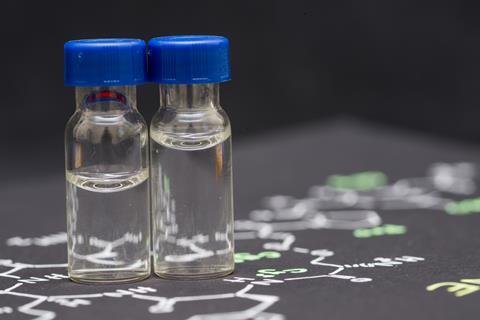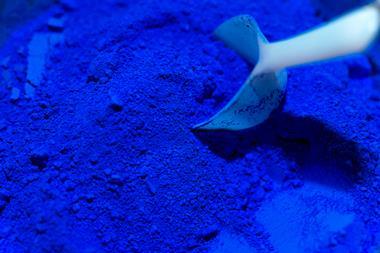Meera Senthilingam
This week, get your party shoes on and prepare to socialise. Leading the way is Josh Howgego.
Josh Howgego
As an introverted scientist I sometimes find parties difficult to cope with. We’ll leave aside the whole business of dancing - that’s just plain terrifying - but the idea of having conversations with people who are much ‘cooler’ than me? Absurd. They’ll start asking what I do, and I’ll have to use phrases like ‘non-covalent interaction’, and pretty soon I’ll see people edging towards the fire exit.
Okay, so I’m exaggerating - a little. But for some people - take autistic people or those who suffer from schizophrenia - social situations can lead to debilitating anxiety. But what if there were a handy nasal spray that could instantly imbue the inhaler with goodwill to all mankind; a chemical that just made social situations flow?

Well, to be blunt, that chemical simply doesn’t exist. But you’d be forgiven for thinking otherwise if you were to Google ‘oxytocin’. The website of a company called Verolabs, for example, will sell you a ’two week supply’ of their oxytocin spray, named ‘liquid trust’, for just $29.95. Sounds like a bargain? Well, don’t part with your hard-earned cash just yet.
Let’s start with the chemical facts about oxytocin. It’s a nine-residue peptide containing a range of amino acids, including two cysteines - one in the middle and one at the end - which link up to form a disulphide bond with one another, creating a loop at one end of the molecule.
Oxytocin had a relatively low-key introduction to the scientific consciousness, when it was found to play roles in the behaviour of several mammal species - including humans. For us, it helps mothers form a strong bond with new-born babies when it is released during childbirth. For prairie voles, it is believed to help sustain the lifelong mating partnerships that they form (bless).
The fact that it is found in so many animals hints at a wide-ranging role for oxytocin; that is, it probably mediates the same behaviour in humans and voles. But until seven years ago, the link with social bonding was the limit of our knowledge about oxytocin. Then in 2005 a group of scientists published a now-famous study in Nature. Their experiment took the form of a simple investment game, before which the players were given either a sniff of oxytocin or a waft of placebo. It was big news when they observed that the oxytocin-sniffing group invested a quite significant 17% more, on average, than the control group. The implication was that oxytcin made people more trusting, and suddenly people started to get excited about this molecule.
That excitement was fuelled by a man named Paul Zak. Whilst only the third author of the seminal Nature paper, it’s fair to say that Zak punches above his weight when it comes to public relations. Known informally as ‘Dr. Love’, named by Wired magazine in their list of the top 10 sexiest geeks of 2005, and with a reported habit of hugging everyone he meets (to raise oxytocin levels, you understand), it is perhaps no wonder the media love him. Zak’s public talks, books and media appearances have done much to make oxytocin’s name.
The trouble is, oxytocin’s reputation as a molecule which promotes blanket goodwill is probably not justified. A new wave of studies has begun to show that oxytocin acts in a much more subtle way than previously thought. In one study, a group of American and Canadian researchers looked at how oxytocin sniffing affected people’s memories of their mothers - an area where oxytocin is already known to play a role.

The scientists suspected that dosing the subjects with oxytocin would merely highlight their relationship with their mothers - put it under a spotlight, if you will - rather than make it more positive, full stop. After all, the idea of a molecule being objectively good sounds unbelievable. For those who had an inconsistent, anxiety-inducing maternal relationship, the researchers thought oxytocin might actually produce a starker, more negative memory.
The study looked at 31 men between the ages of 19 and 45 (women are generally excluded from oxytocin studies of this sort because the molecule is also used a labour-inducing drug). And the results supported the theory, to a confidence level of 95%. For the men who reported more anxiety about forming relationships before the tests, oxytocin enhanced this negative feeling with respect to their mums.
Another study showed that the hormone does increase trust, but only towards individuals that the subject already identifies with. Again, the participants were dosed with oxytocin or placebo, but this time they played an investment-type game in groups. Here, the results clearly linked oxytocin to protectionist behaviour: the individuals were more caring towards their group, but acted defensively towards outsiders.
Overall, these studies paint a more nuanced picture of oxytocin. Now the data seems to show that oxytocin enhances social biases, whether these are moral in an objective sense, or not.
Given how painful and disruptive social anxiety can be, some are hoping that coupling oxytocin with psychotherapy will create more effective treatments for some people with autism. Many clinical trials in this area are currently underway, but we should only be cautiously optimistic. It seems clear that oxytocin is not simply ‘liquid trust’ or a ‘cuddle chemical’, it has a darker side too, one that we must understand properly before we get ahead of ourselves.
Meera Senthilingam
So not quite the chemical to get you cuddling then. That was Josh Howgego with the trusting chemistry of oxytocin. Next week, we’re left feeling a little blue
Laura Howes
Until the eighteenth century, however, blue was a highly prized colour - expensive and tightly controlled. If you look at artwork from before this time, the colour blue is rare and often only used in religious paintings - and mostly only to colour the clothing of the holiest people. To paint in blue was the equivalent of today’s celebrities wearing ‘bling’.
The pigment used to produce this prized paint was ultramarine, itself made from the mineral lapis lazuli. As the name ‘ultramarine’ suggests, this came to Europe from ‘beyond the sea’ - Afghanistan, to be exact - which explains why the colour blue was such an expensive rarity. That all changed with the introduction of one of the first synthetic pigments, coming out of Germany in the 1700s, called Prussian blue.
Meera Senthilingam
And to find out the chemistry behind this compound, which revolutionised the art and dye industry, join Laura Howes in next week’s Chemistry in its Element. Until then, thank you for listening, I’m Meera Senthilingam.













No comments yet